The Influence of Wire Speed on Phase Transitions and Residual Stress in Single Crystal Silicon Wafers Sawn by Resin Bonded Diamond Wire Saw
Abstract
1. Introduction
2. Materials and Methods
2.1. Resion Bonded Diamond Wire Saw
2.1.1. Multi-Wire Saw Machine
2.1.2. Resin Bonded Diamond Wire Saw
2.2. Raman Spectrum Characterization
3. Results
3.1. Phase Transition
3.2. Residual Stress
3.2.1. The Distribution of Residual Stress
3.2.2. The Effect of Wire Speed on Residual Stress
4. Conclusions
Author Contributions
Funding
Institutional Review Board Statement
Informed Consent Statement
Data Availability Statement
Conflicts of Interest
References
- Yi, S.; Lu, W.; Wu, F.; Ding, P. Investigation of rapid composite plating of core wire magnetized electroplated diamond wire saw. Diam. Relat. Mater. 2021, 116, 1–10. [Google Scholar] [CrossRef]
- Meinel, B.; Koschwitz, T.; Blocks, C. Comparison of diamond wire cut and silicon carbide slurry processed silicon wafer surfaces after acidic texturisation. Mat. Sci. Semicon. Proc. 2014, 26, 93–100. [Google Scholar] [CrossRef]
- Kumar, A.; Prasath, R.G.R.; Pogue, V.; Skenes, K.; Yang, C.; Melkote, S.N. Effect of growth rate and wafering on residual stress of diamond wire sawn silicon wafers. Procedia Manuf. 2016, 5, 1382–1393. [Google Scholar] [CrossRef]
- Kumar, A.; Skenes, K.; Prasath, R.G.R.; Yang, C.; Melkote, S.N.; Danyluk, S. Spatial distribution of full-field residual stress and its correlation with fracture strength of thin silicon wafers. In Proceedings of the 28th European Photovoltaic Solar Energy Conference and Exhibition EU PVSEC, Villepinte, France, 30 September–4 October 2013; pp. 1474–1476. [Google Scholar]
- Wu, H. Wire sawing technology: A state-of-the-art review. Precis. Eng. 2016, 43, 1–9. [Google Scholar] [CrossRef]
- Yang, J.; Banerjee, S.; Wu, J. Phase and stress evolution in diamond microparticles during diamond-coated wire sawing of Si ingots. Int. J. Adv. Manuf. Tech. 2016, 82, 1675–1682. [Google Scholar] [CrossRef]
- Würzner, S.; Falke, A.; Buchwald, R. Determination of the impact of the wire velocity on the surface damage of diamond wire sawn silicon wafers. Energy Procedia 2015, 77, 881–890. [Google Scholar] [CrossRef]
- Bidiville, A.; Wasmer, K.; Kraft, R. Diamond wire-sawn silicon wafers-from the lab to the cell production. In Proceedings of the 24th EU PV-SEC, Hamburg, Germany, 21–24 September 2009; pp. 1400–1405. [Google Scholar]
- Suzuki, T.; Nishino, Y.; Yan, J. Mechanisms of material removal and subsurface damage in fixed-abrasive diamond wire slicing of single-crystalline silicon. Precis. Eng. 2017, 50, 32–43. [Google Scholar] [CrossRef]
- Wu, H.; Melkote, S.N. Study of ductile-to-brittle transition in single grit diamond scribing of silicon: Application to wire sawing of silicon wafers. J. Eng. Mater. Tech. 2012, 134, 041011. [Google Scholar] [CrossRef]
- Würzner, S.; Herms, M.; Kaden, T. Characterization of the diamond wire sawing process for monocrystalline silicon by Raman spectroscopy and SIREX polarimetry. Energies 2017, 10, 414. [Google Scholar] [CrossRef]
- Yang, C.; Mess, F.; Skenes, K. On the residual stress and fracture strength of crystalline silicon wafers. Appl. Phys. Lett. 2013, 102, 021909. [Google Scholar] [CrossRef]
- Banerjee, S.; Yang, J.; Wu, J. Phase and stress evolution of Si swarf in the diamond-coated wire sawing of Si ingots. Int. J. Adv. Manuf. Tech. 2017, 89, 735–742. [Google Scholar] [CrossRef]
- Wu, H. Fundamental Investigations of Cutting of Silicon for Photovoltaic Applications. Ph.D. Thesis, Georgia Institute of Technology, Atlanta, GE, USA, 2012. [Google Scholar]
- Popovich, V.A.; Westra, J.M.; van Swaaij, R.M. Raman spectroscopy characterization of residual stress in multicrystalline silicon solar wafers and solar cells: Relation to microstructure, defects and processing conditions. In Proceedings of the Photovoltaic Specialists Conference (PVSC), Seattle, WA, USA, 19–24 June 2011; pp. 001668–001673. [Google Scholar]
- Zhang, Y.; Wang, D.; Gao, W. Residual stress analysis on silicon wafer surface layers induced by ultra-precision grinding. Rare Met. 2011, 30, 278–281. [Google Scholar] [CrossRef]
- Gogotsi, Y.; Baek, C.; Kirscht, F. Raman microspectroscopy study of processing-induced phase transformations and residual stress in silicon. Semicond. Sci. Tech. 1999, 14, 936. [Google Scholar] [CrossRef]
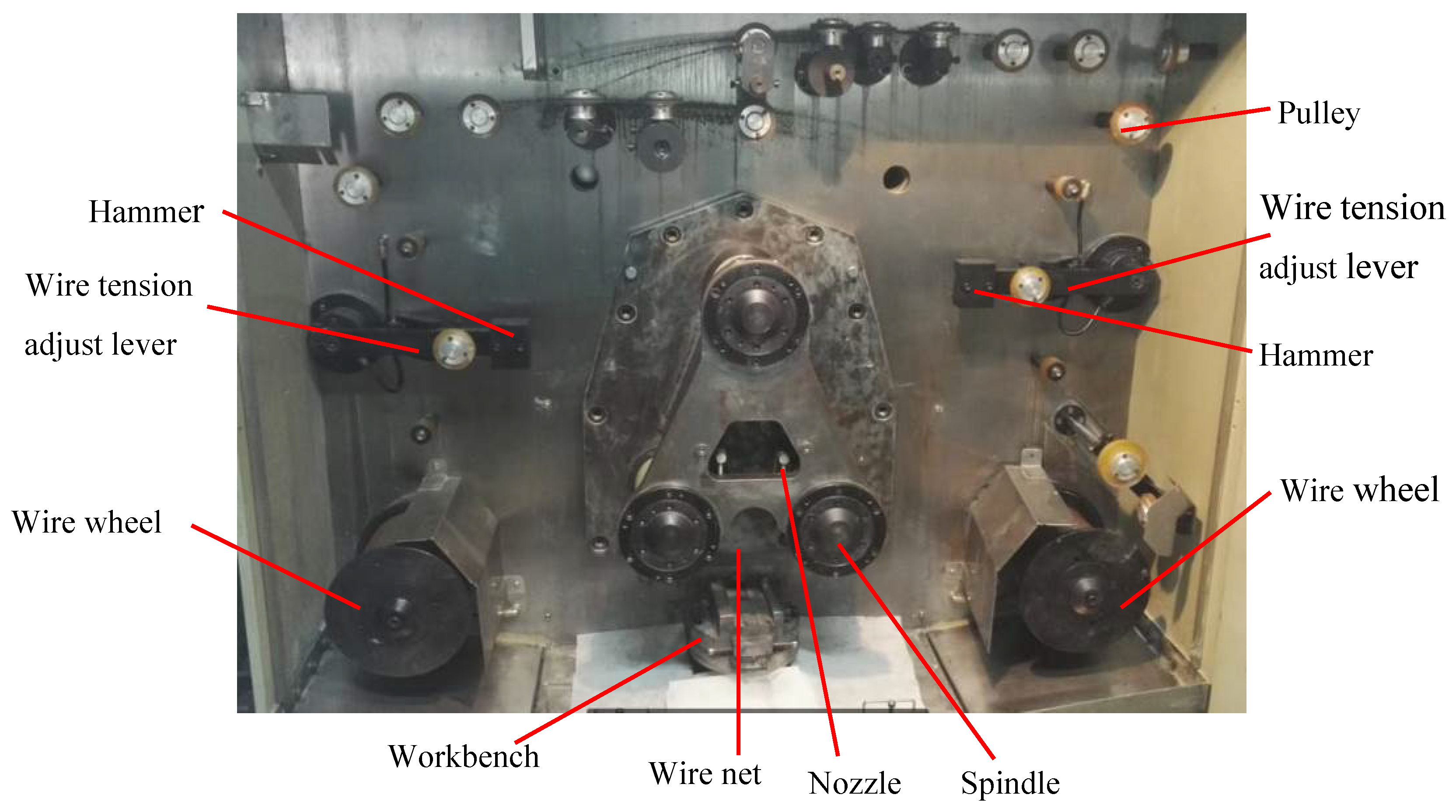

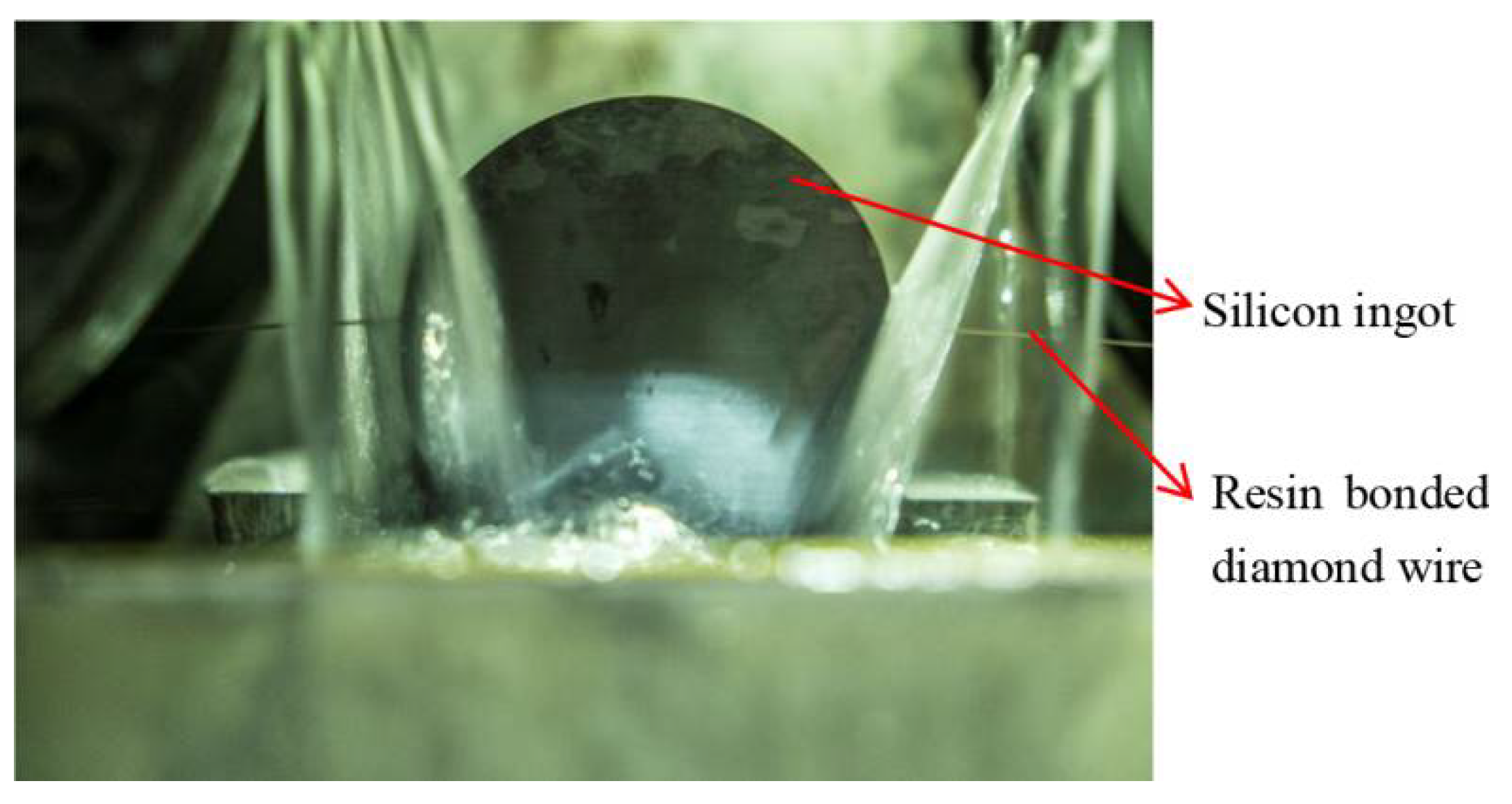
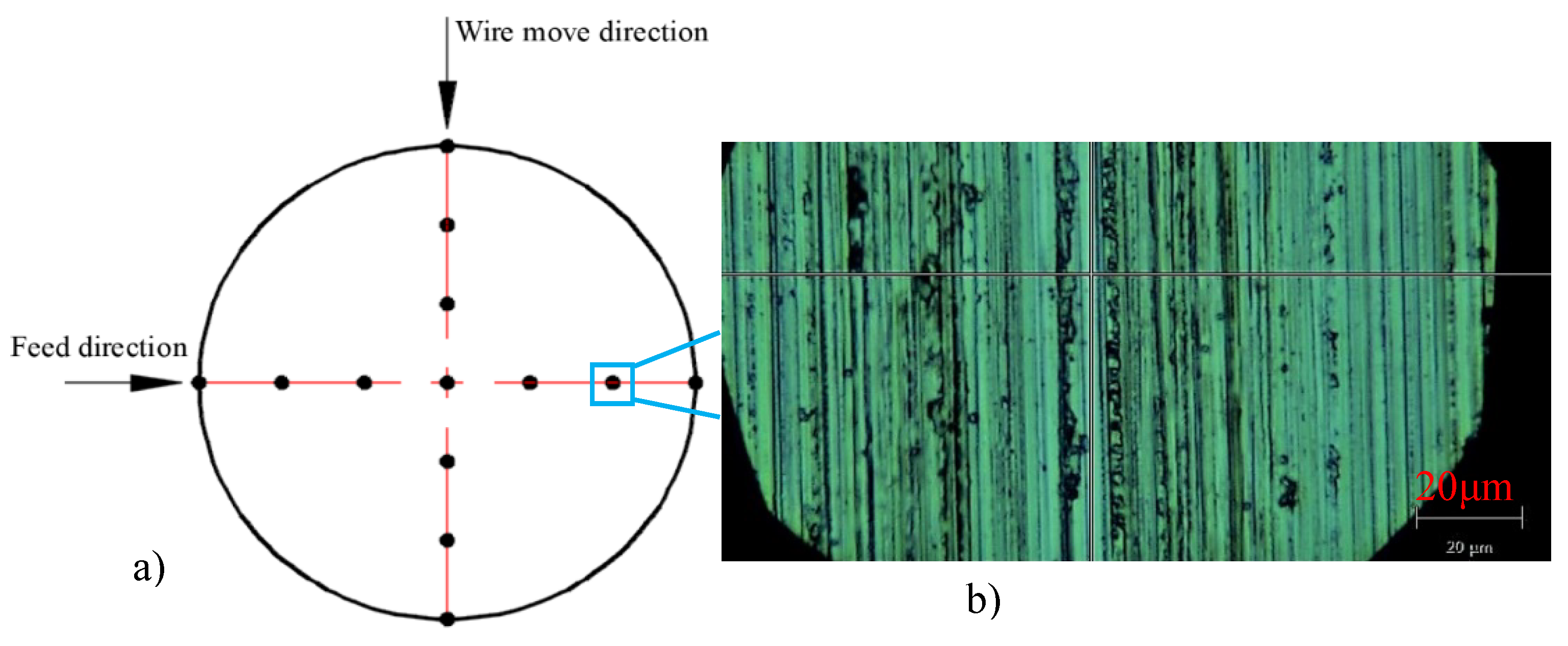
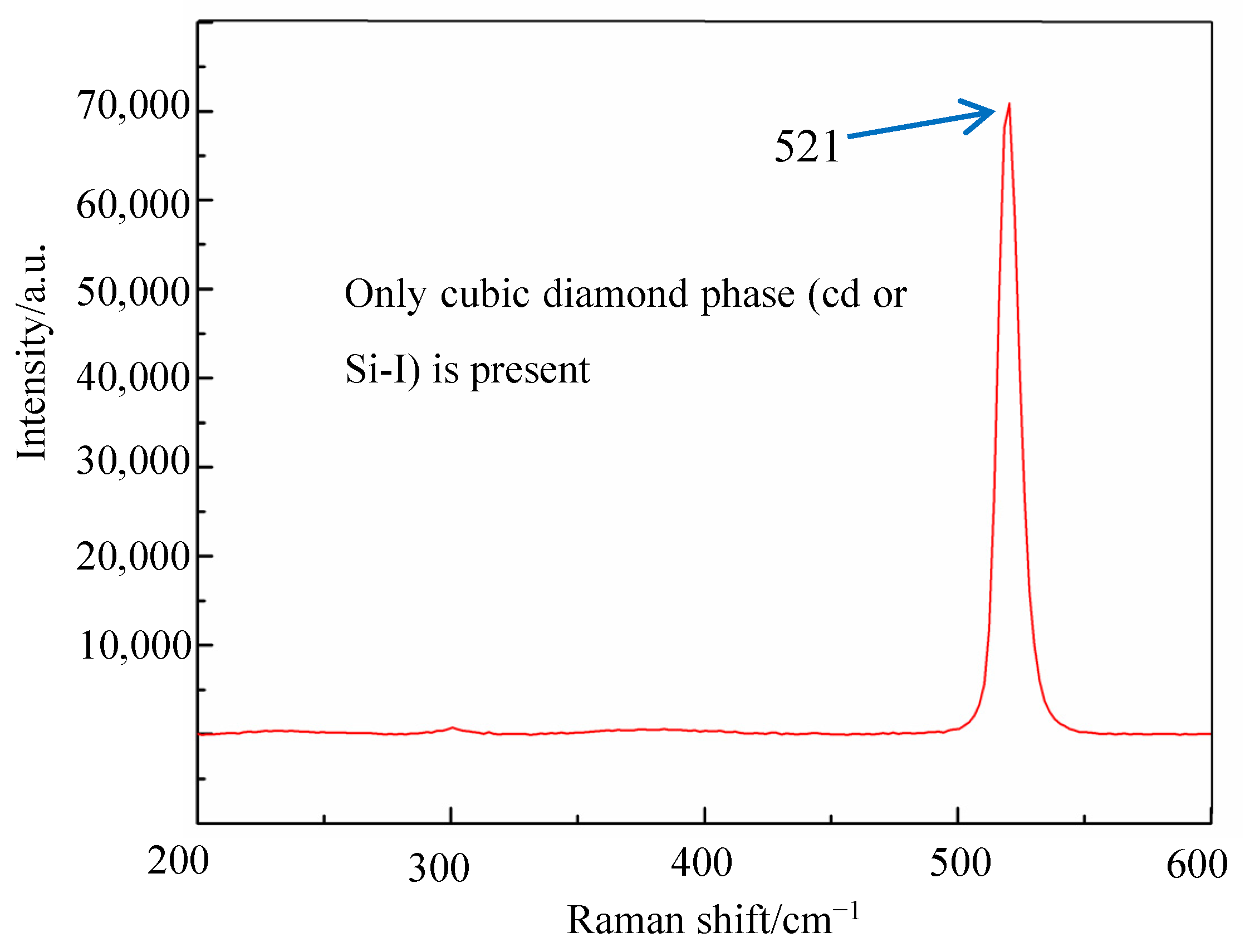

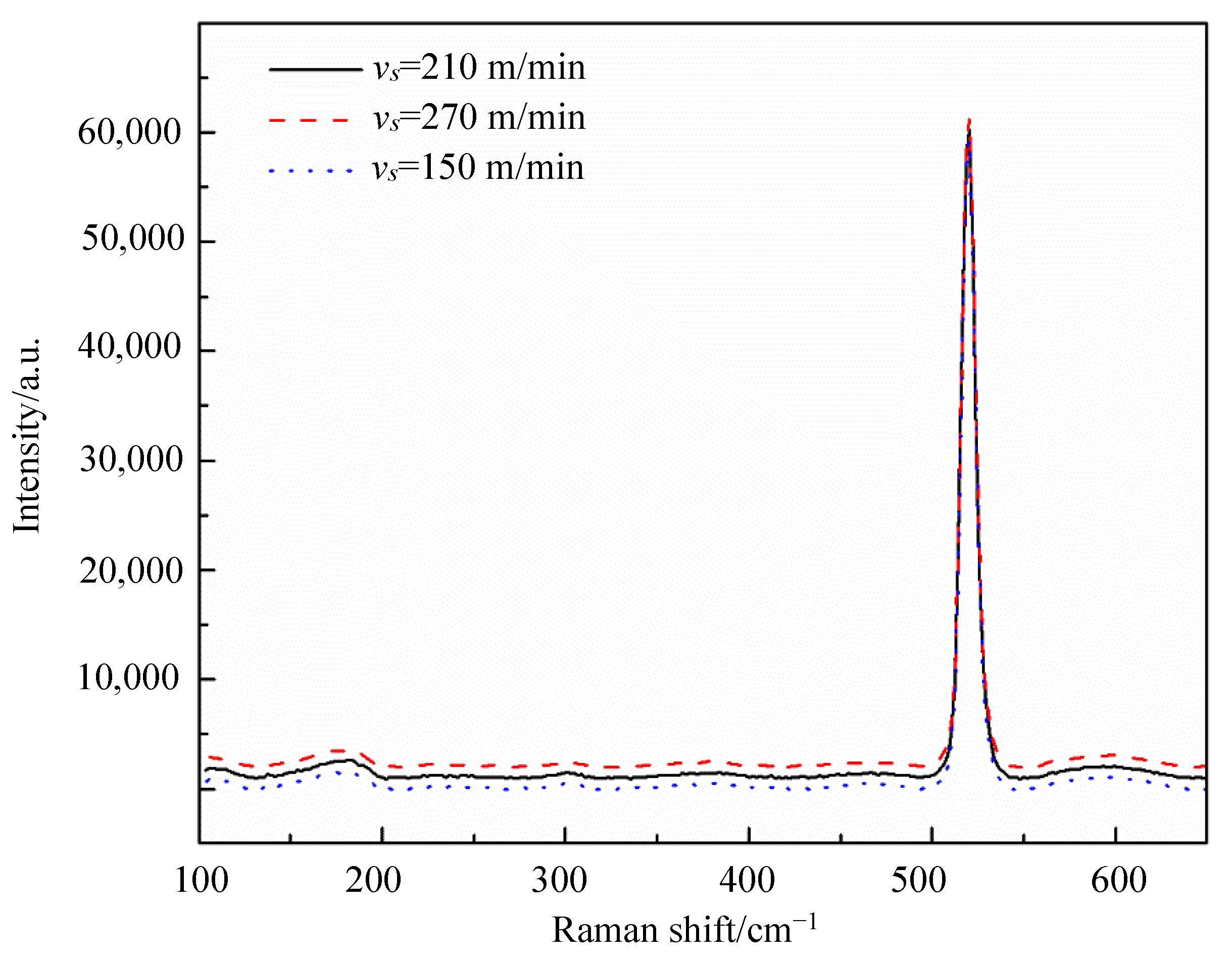
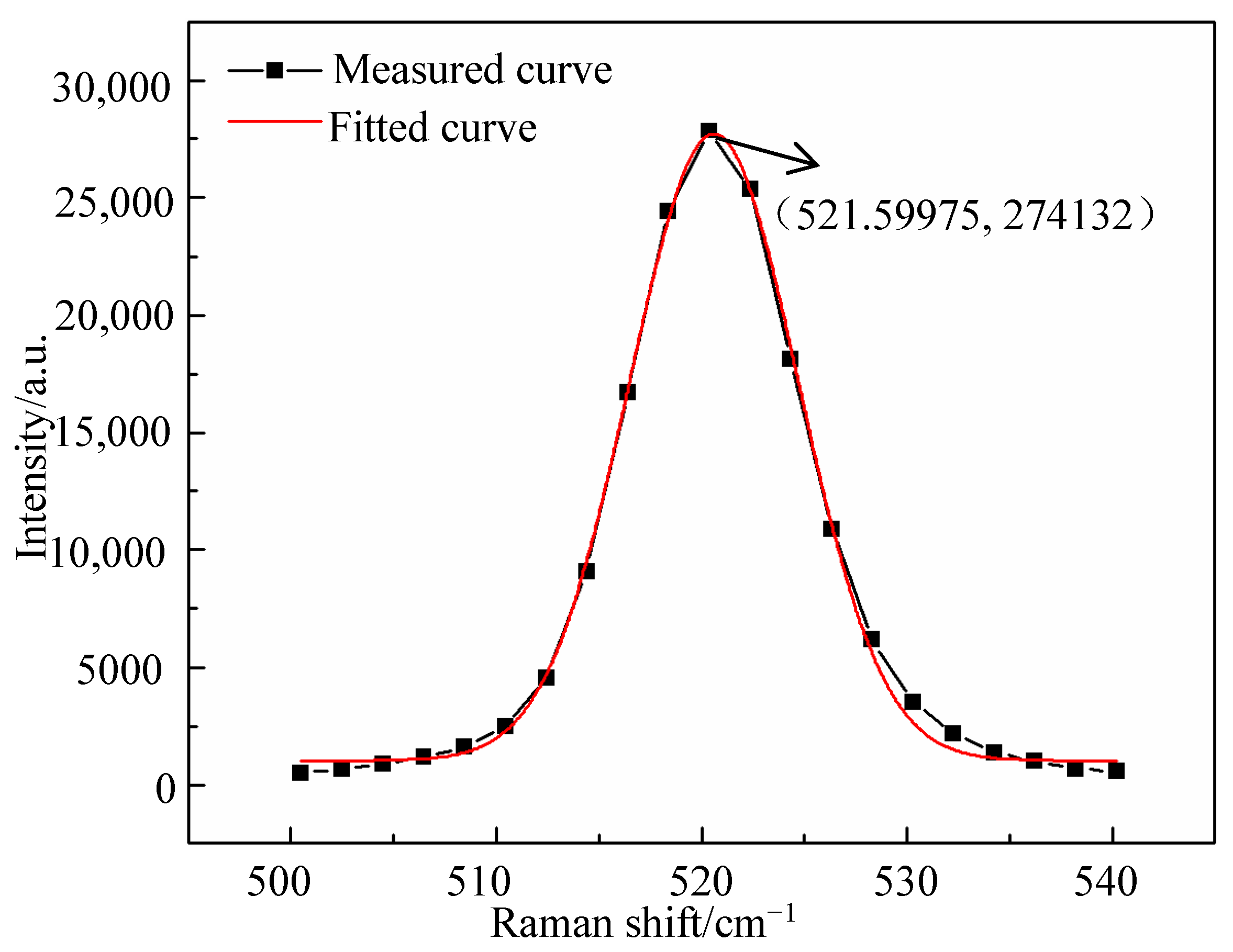
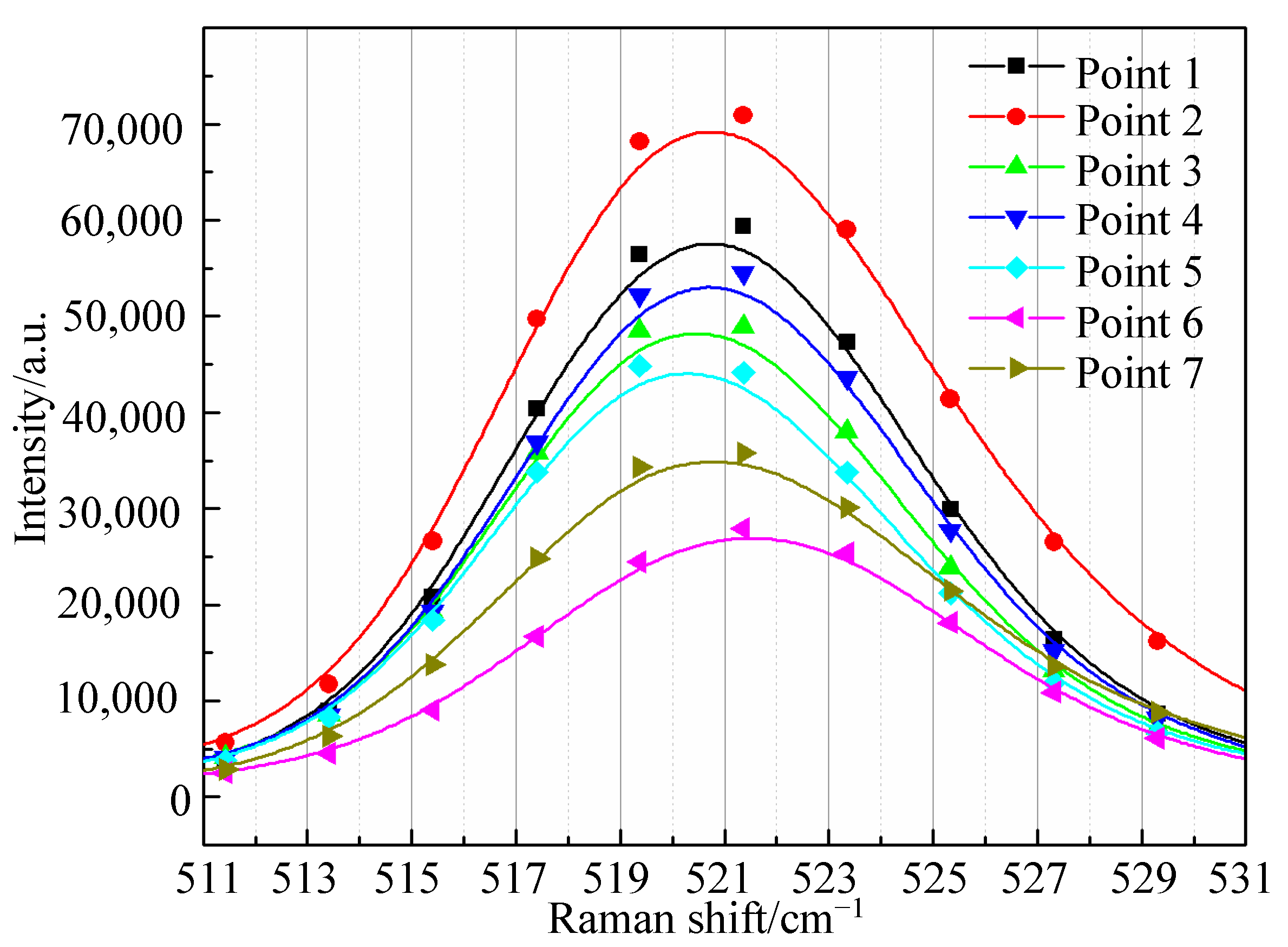

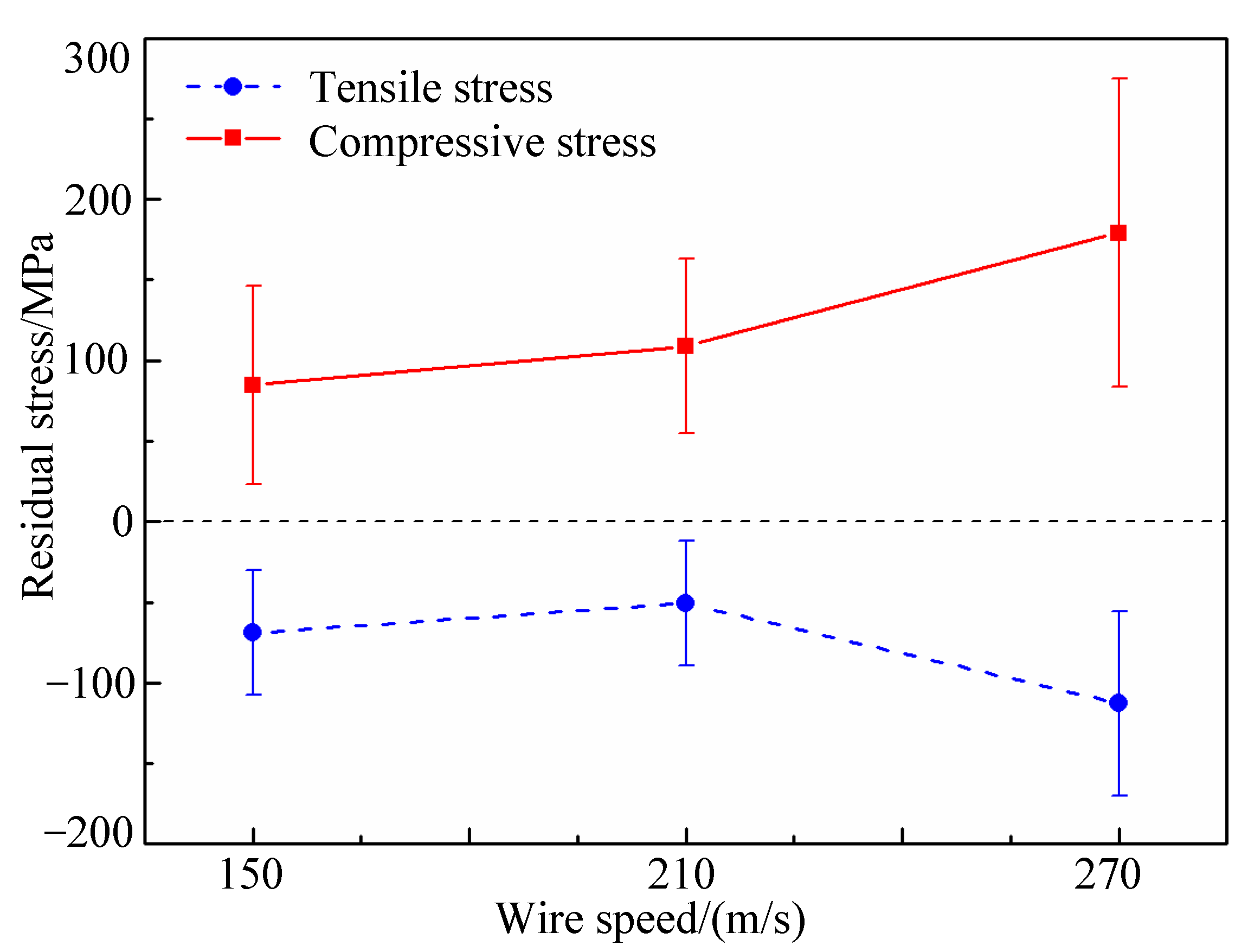
| No. | Wire Seed | Feed Speed | Wire Tension |
|---|---|---|---|
| 1 | 150 m/min | 0.2 mm/min | 12 N |
| 2 | 210 m/min | 0.2 mm/min | 12 N |
| 3 | 270 m/min | 0.2 mm/min | 12 N |
| Wire Speed | Raman Intensity Ratio r | Depth of Amorphous Layer/nm |
|---|---|---|
| vs = 150 m/min | 0.13 | 6.556 |
| vs = 210 m/min | 0.27 | 12.39 |
| vs = 270 m/min | 0.59 | 22.73 |
Publisher’s Note: MDPI stays neutral with regard to jurisdictional claims in published maps and institutional affiliations. |
© 2021 by the authors. Licensee MDPI, Basel, Switzerland. This article is an open access article distributed under the terms and conditions of the Creative Commons Attribution (CC BY) license (https://creativecommons.org/licenses/by/4.0/).
Share and Cite
Liu, T.; Ge, P.; Bi, W. The Influence of Wire Speed on Phase Transitions and Residual Stress in Single Crystal Silicon Wafers Sawn by Resin Bonded Diamond Wire Saw. Micromachines 2021, 12, 429. https://doi.org/10.3390/mi12040429
Liu T, Ge P, Bi W. The Influence of Wire Speed on Phase Transitions and Residual Stress in Single Crystal Silicon Wafers Sawn by Resin Bonded Diamond Wire Saw. Micromachines. 2021; 12(4):429. https://doi.org/10.3390/mi12040429
Chicago/Turabian StyleLiu, Tengyun, Peiqi Ge, and Wenbo Bi. 2021. "The Influence of Wire Speed on Phase Transitions and Residual Stress in Single Crystal Silicon Wafers Sawn by Resin Bonded Diamond Wire Saw" Micromachines 12, no. 4: 429. https://doi.org/10.3390/mi12040429
APA StyleLiu, T., Ge, P., & Bi, W. (2021). The Influence of Wire Speed on Phase Transitions and Residual Stress in Single Crystal Silicon Wafers Sawn by Resin Bonded Diamond Wire Saw. Micromachines, 12(4), 429. https://doi.org/10.3390/mi12040429





